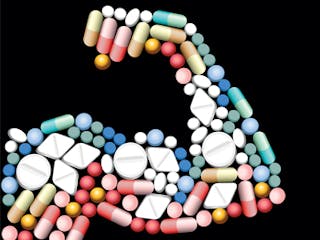Bodybuilding and the Steroid Trade

Researchers
Dr Katinka van de Ven, Lecturer in Criminology, School of Social Sciences
Background
This research project explored the illegal trade of steroids amongst bodybuilders, a means by which many fund their own use of performance and image enhancing drugs and maintain their social status in the weightlifting community. The research was funded by the School of Social Policy, Sociology & Social Research of the University of Kent and the Educational Audio-visual and Culture Executive Agency of the European Union. The report was co-written by Kyle Mulrooney, DCGC fellow at the University of Kent.
Research findings
While many government agencies and sport officials have suggested that substances are sold largely by organised crime groups for financial gain, this project demonstrated that the majority of performance and image enhancing drugs within bodybuilding subcultures were distributed by individuals for social reasons or to support their own training.
Those who sold products such a steroids, human growth hormone or illegal tanning lotions most commonly did so to put extra money towards the sport, to help out friends, or to ensure safe and quality substances were being taken.
Their social status within the bodybuilding community was found to normalise the sale of drugs, with many overlooking legal implications of the act, while some saw sale as an entrepreneurial opportunity.
“For these people that currently cannot stop or wish to continue, it is important to reduce harms as much as possible, and have proper harm reduction measures in place, like we do for recreational drug users.
“For example, some of these suppliers in bodybuilding subcultures, often referred to as ‘steroid mentors’, have a high status in these communities. Instead of driving them away, by targeting them with law enforcement measures, this may offer a potential opportunity to deliver accurate information via an established and credible communication network, and may help in providing accessible and acceptable health-related information.”
He added: “It is much too simple to point to organised crime and criminal groups and to respond with zero-tolerance and criminal justice measures.
“The fact is we know very little about the illegal market for performance and image enhancing drugs. Our point here is to indicate that there are different rationales and motivations for selling these substances and as such policy should likewise reflect this plurality of drivers.
“To do so however, we must first learn to separate ‘performance and image enhancing drugs as a public health matter’ from ”performance and image enhancing drugs as anti-doping matter.”
Method of research
Researchers analysed more than 60 criminal cases and interviewed dozens of people involved in the purchase and sale of performance enhancers in the Netherlands and Belgium, to identify the different types of people drawn to selling the drugs.
The report found that sellers often broke the law to help fund their own use of steroids and that most viewed the substances no differently to high street supplements such as protein powders, energy bars or sports drinks.
Outcomes
The research paper titled, Social suppliers: Exploring the cultural contours of the performance and image enhancing drug (PIED) market among bodybuilders in the Netherlands and Belgium, identified three main types of dealer:
- Market oriented dealers – Less embedded in bodybuilding culture but aware of entrepreneurial opportunities
- Social-commercialist dealers – Heavily embedded in bodybuilding culture but aware of money making opportunities through sale
- Minimal commercialist dealers – Heavily embedded in bodybuilding culture but normally sell to help friends, build contacts or ensure high quality products are used
The report, published in the International Journal of Drug Policy, is one of very few studies to look at the criminal element of performance and image enhancing drugs.
The report suggests that in order to cut crime, reduce harm and improve treatment, greater attention needs to be paid to the social and cultural factors which lead to sales of performance and image enhancing drugs.
Dr Katinka Van de Ven said: “While preventing performance and image enhancing drugs use is important, we need to realise that in certain subcultures the use of steroids and other substances in not likely to stop soon – and may even increase in the coming years.